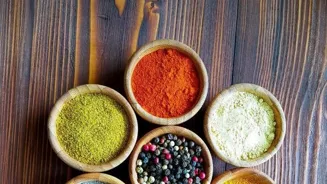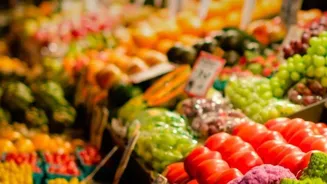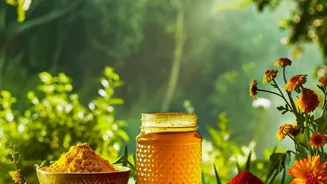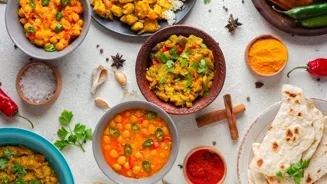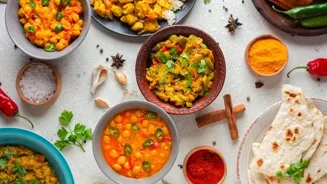Unveiling The Influence of Regional Ingredients on Indian Cuisine - A Culinary Journey of Diversity and Flavor. Delve deeper!
India, a land of diverse cultures and traditions, boasts a cuisine as varied
as its landscapes. From the snow-capped Himalayas to the sun-kissed coasts, each region offers a unique culinary experience shaped by the ingredients readily available.
The influence of these regional ingredients is what makes Indian food so incredibly diverse and flavourful. It's not just about spices; it's about the foundational elements that define the very essence of a dish.
Coconut in South, wheat in North, pulses in Rajasthan, fish in East
Think about the humble coconut, a staple in coastal states like Kerala and Goa. Here, you'll find coconut milk enriching curries, coconut oil used for frying, and even grated coconut sprinkled liberally on dishes for added texture and flavour. Move up north to Punjab, where wheat is king.
You'll find an array of flatbreads like roti, naan, and paratha taking center stage, reflecting the region's agricultural abundance. Rajasthan, in contrast, faces a scarcity of fresh produce due to its arid climate.
This has led to ingenious culinary traditions, such as using dried lentils, beans, and locally grown vegetables like ker sangri to create flavorful and nutritious meals. Eastern India, particularly West Bengal, is renowned for its love of fish and rice.
The abundance of freshwater rivers and ponds has made fish a staple ingredient, resulting in dishes like macher jhol (fish curry) and bhapa ilish (steamed hilsa fish).
Regional geography shapes ingredients for diverse cuisines
The impact of regional geography on ingredients is profound. High-altitude regions like the Himalayas rely on ingredients that can withstand the cold climate. Potatoes, lentils, and barley are common staples, lending themselves to hearty and comforting dishes.
In the fertile plains of the Indo-Gangetic region, a variety of vegetables and grains flourish. This abundance is reflected in the diverse range of vegetarian dishes found in states like Uttar Pradesh and Bihar.
The coastal regions, with their access to the sea, naturally incorporate seafood into their cuisine. Fish, prawns, and crabs are prepared in countless ways, often with the addition of local spices and herbs.
Regional spices define Indian cuisine's diverse flavors
The use of spices further highlights the regional variations in Indian cuisine. While some spices like turmeric and cumin are used throughout the country, others are more specific to certain regions.
For example, kokum, a souring agent, is commonly used in Goan and Maharashtrian cuisine, adding a tangy twist to dishes. Kashmiri cuisine is known for its use of saffron, which imparts a delicate flavour and vibrant colour to dishes like Kashmiri pulao and rogan josh.
The Chettinad region of Tamil Nadu is renowned for its fiery and aromatic spice blends, which are used to create intensely flavourful curries and gravies.
Regional sweets reflect unique ingredients and flavors
The influence of regional ingredients extends beyond just the main courses. Sweets and desserts also showcase the unique flavours of each region. In Bengal, you'll find an array of milk-based sweets like rasgulla and sandesh, made with fresh chhena (paneer) and flavored with cardamom and rosewater.
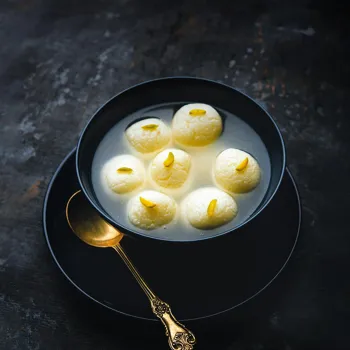
Gujarat is known for its sweet and savoury snacks, often made with gram flour and flavored with spices like ajwain and cumin. South India is famous for its payasam (kheer), a sweet pudding made with rice, milk, and jaggery, and often flavored with cardamom, nuts, and dried fruits.
Indian cuisine's magic: diverse, adaptable tapestry of regional ingredients
Ultimately, the magic of Indian cuisine lies in its ability to adapt and evolve based on the ingredients available in each region. This has resulted in a culinary tapestry that is rich, diverse, and endlessly fascinating.
By understanding the influence of regional ingredients, we can gain a deeper appreciation for the incredible variety and complexity of Indian food.
So next time you're enjoying an Indian meal, take a moment to consider the origins of the ingredients and the story they tell about the region from which the dish originates.
